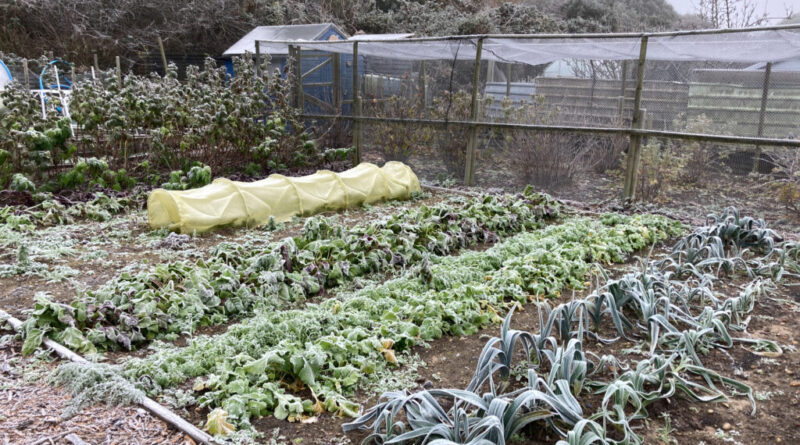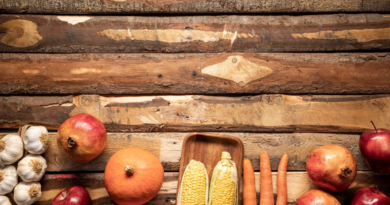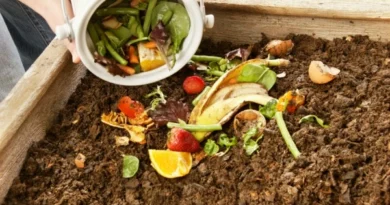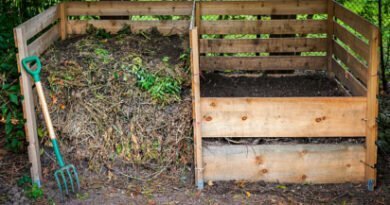Winter Allotment Guide: Tending to Your Allotment Plot Through the Colder Months
As the chilly embrace of winter draws near and the joyous festive season approaches, it’s essential to turn your focus to the well-being of your allotment. Ensuring a bountiful beginning to the upcoming year requires thoughtful attention and proactive care. In this crucial period between autumn’s retreat and winter’s arrival, a seasoned gardening expert provides invaluable tips to guide you through optimising the potential of your allotment or vegetable patch. Embrace these insights to cultivate a thriving and resilient garden that will not only weather the winter months but also set the stage for a flourishing and fruitful year ahead.
Manage Weed Growth
Tackle weeds now to set the stage for a weed-free allotment in the spring. For persistent weeds, such as couch grass and ground elder, lay cardboard with a layer of compost on top. This clever technique efficiently suppresses weed growth.
Handle the Remnants of Finished Crops
Instead of strenuously removing all roots from spent crops, cut them off at ground level. Leaving the roots in place allows microbes to break them down, enriching the soil. A layer of compost on the surface prepares the ground for the next growing season.
Harvest the Remaining Vegetables
While some vegetables like parsnips can endure winter in the ground, consider lifting carrots before they become a feast for slugs. Carrots store well in a cool, dry shed. Turnips and celeriac are also candidates for lifting before frost hits.
Care for Fruits
For autumn-fruiting raspberry canes, pruning them down to ground level between December and March is ideal. Spread woody compost or woodchip over the area for optimal care.
Embrace a ‘No-Dig’ Approach
Preserve soil structure and encourage soil life by avoiding extensive digging. Apart from removing woody plants or brambles, embrace a ‘no-dig’ philosophy.
Enhance Soil Health
Mimic nature by collecting organic matter, such as leaves and dead plants, to apply to the vegetable patch’s surface. Compost, whether from the garden or other organic sources like spent hops or coffee grounds, provides an excellent soil boost.
Plant Garlic
December isn’t entirely dormant; it’s an opportune time to plant garlic. Plant cloves close to the surface, covering them with compost for robust roots.
Indoor Sowing for Pea Shoots
Engage in indoor gardening by sowing peas for delightful pea shoots. Kids can participate in the fun, and with adequate light, the shoots will continue to grow through the winter.
Plan Your Year Ahead
End the year on a productive note by jotting down ideas for your allotment. Consider what you want to eat and draft plans for spring and summer plantings. Make two plans one for spring and another for summer to maximise your garden’s potential.
As winter approaches, these tips ensure that your allotment receives the care it needs for a successful and rewarding growing season.

FAQ Section:
Q1: Can anything be grown in the winter on an allotment?
- A1: Absolutely! Many winter-resilient crops thrive in the UK during the colder months, including leafy greens, root vegetables, and winter brassicas.
Q2: How can I protect my allotment from frost?
- A2: Utilise protective structures such as cloches, tunnels, and cold frames to shield vulnerable plants from frost and harsh winds.
Q3: Are there any special considerations for watering in winter?
- A3: Yes, even in winter, plants need moisture. Ensure consistent watering, especially during dry spells, to maintain plant health.
Q4: What should I do with leftover crops from the previous growing season?
- A4: Clear away any spent crops and debris to reduce the risk of pests and diseases, contributing to a healthier plot in the upcoming season.
Q5: Can I start planning for spring during the winter months?
- A5: Absolutely! Use the winter months to plan for spring, considering crop rotation, selecting seeds, and making any necessary adjustments to your gardening strategy.
The winter allotment is not a dormant canvas awaiting the vibrancy of spring but a dynamic space brimming with possibilities. With each thoughtful action and strategic decision, you transform your allotment into a resilient oasis, a testament to the enduring spirit of both the gardener and the garden. As the winter unfolds, may your allotment thrive, and may you find joy in the resilience and beauty that this season brings to your gardening endeavours. Happy winter gardening!




